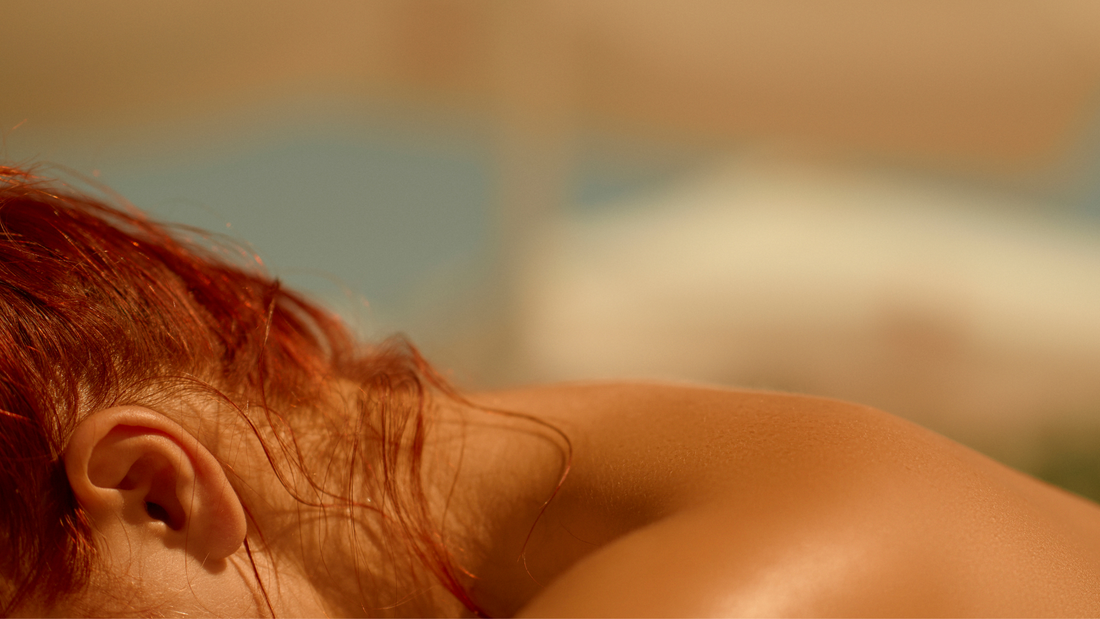The truth about a suntan

There is no such thing as a healthy tan. The skin produces a dark-coloured pigment, melanin, as a shield against further damage from UV radiation. The darkening provides some protection against sunburn: a dark tan on a white skin offers a sun protection factor of between 2 and 4. However, it is no defence against long-term UV damage such as skin cancer. A suntan may be cosmetically desirable, but in fact it is nothing but a sign that your skin has been damaged and has attempted to protect itself.
There are two distinct types of tanning reactions: immediate pigment darkening occurs, where the pigment called melanin already present in the skin darkens on exposure to UVA. This immediate tan begins to fade within a few hours after cessation of exposure. Delayed tanning happens over a period of about three days, when new melanin is produced and distributed between the upper skin cells. This tan can persist for several weeks.

Each adhesive dot on former Australian lifeguard represents a removed skin cancer.
Photograph by Sarah Leen, National Geographic.
Sunburn
High doses of UV radiation kill most of the skin cells in the upper skin layer, and cells that are not killed get damaged. In its mildest form, sunburn consists of a reddening of the skin called erythema. This appears shortly after UV radiation exposure and reaches a maximum intensity between 8 and 24 hours. It then fades over the course of a few days. However, a strong sunburn may cause the skin to blister and peel, which is not only painful but also leaves the very white new skin underneath unprotected and even more prone to UV damage.
Photosensitivity
A small percentage of the population have a skin condition that makes them particularly sensitive to the sun's UV rays. A minimal dose of UV radiation is sufficient to trigger an allergic reaction leading to rash or severe sunburn. Photosensitivity is often associated with the use of certain medications, including some non-steroidal anti-inflammatory drugs and painkillers, tranquillisers, oral anti-diabetics, antibiotics and antidepressants. If you take any medication on a regular basis, please refer to the package insert for the product or consult your health care provider about possible photosensitivity reactions. Some foods and cosmetic products like fragrances and soaps may also contain ingredients that cause or aggravate the photosensitivity condition.
The wrinkle factor
Sun exposure promotes the ageing of your skin due to a combination of several factors. UVB stimulates cell proliferation in the outer layer of the skin. As more and more cells are produced the epidermis thickens. UVA penetrating into the deeper skin layers disturbs the connective tissue: the skin gradually loses its elasticity. Wrinkles, sags and bags are the common result of this loss of elasticity. A phenomenon often seen in elderly people is the localised over-production of melanin resulting in dark patches or liver spots. Furthermore, the sun's rays dry out your skin making it coarse and leathery.
Non-melanoma skin cancers
In contrast to malignant melanoma, the non-melanoma skin cancers basal and squamous cell carcinoma are not usually fatal but surgical treatment can be painful and result in scars. Non-melanoma skin cancers are most frequent on those parts of the body that are commonly exposed to the sun such as ears, face, neck and forearms. The finding that they are more frequent in outdoor than in indoor workers suggests that the accumulated life-time exposure to UV radiation plays a major role in the development of non-melanoma skin cancers.
(i) Basal cell carcinomas are the most common type of skin cancer. Their reported incidence has drastically increased over the past two decades and continues to rise. They usually appear as a red lump or scaly area, however, no clear precursors have been identified. They grow slowly, rarely spread to other parts of the body (metastasize) and can be removed surgically.
Melanoma skin cancers
Malignant melanoma is the rarest but most dangerous type of skin cancer. It is one of the most common cancers among 20- to 35-year-olds, especially in Australia and New Zealand. All forms of skin cancer have been on the increase over the past twenty years, however, the highest rate of increase worldwide is noted for malignant melanoma.
Malignant melanoma may arise as a new mole or as changes in colour, shape, size or sensation of an old spot, freckle or mole. Melanomas tend to have an irregular outline and a patchy colouring. Itching is another common symptom but is also found in normal moles. If recognised and treated early, the chances of survival are good. If untreated, the tumour can develop rapidly, and cancer cells can spread to other parts of the body.
The causes of malignant melanoma are not fully understood. Exposure during childhood is thought to be more important than exposure later in life. Tumour development may be linked to occasional exposure to short periods of intense sunlight, such as at weekends or on holiday. The higher incidence of malignant melanoma in indoor workers compared to outdoor workers supports that notion.
Be sure to watch out for early symptoms of malignant melanoma
If you have a mole, freckle or spot you are concerned about, go and see a dermatologist. It may well not be a melanoma; however, if it is a melanoma, it is crucial that it is recognised and treated early. Check regularly for any mole that grows, changes shape or colour, is inflamed or itchy, weeps or bleeds.
But even better … avoid the cancerogenic exposure to the rays of the sun in the first place. Here lies the mission of Solbari. We want to provide the public at large with the most advanced and effective means of protection against the harmful rays of the sun. To achieve this objective, we have produced a range of clothing, sun hats and accessories to ensure that your skin will have the maximum protection from the adverse factors that can impede its proper functioning.
You can find out more about Solbari's certified UPF50+ sun protective range by clicking the links below:
Women UPF 50+
Men UPF 50+
Sun Hats UPF 50+
Accessories UPF 50+
SPF 50+ Sunscreen
Skin Check App
Written in collaboration with Professor Gary Sampson (Geneva, Switzerland).












